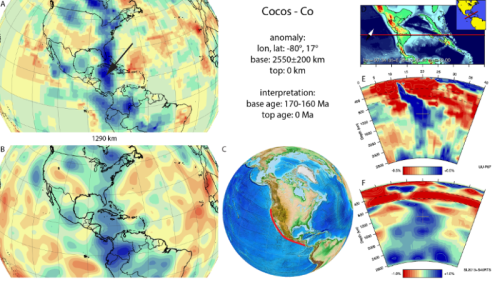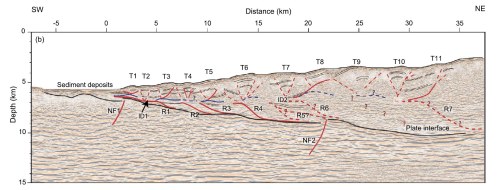A sign that an earthquake is taking place is pretty obvious: the ground moves. Seismometers are now so sensitive that they record significant seismic events at the far side of the world. The Richter magnitude scale commonly used to assign the power of an event is logarithmic, and the difference between each unit represents an approximately 32-fold change in the energy released at the source, so that a magnitude 6.0 earthquake is 32 times more powerful than one rated as magnitude 5.0. Because seismic motion affects a mass of rock it also perturbs the gravitational field. So, theoretically, gravimeters should also be able to detect an earthquake. Seismic waves travel at a maximum speed of about 6 to 8 km s-1 about 20 times the speed of sound, yet changes in the gravitational field propagate at the speed of light, i.e. almost instantaneously by comparison. The first ground disturbances of the magnitude 9.0 Tohoku-Oki earthquake of NE Japan on 11 March 2011 hit Tokyo about 2 minutes after the event began offshore. Although that is a quite short time it would be sufficient for people to react and significantly reduce the earthquake’s direct impact on many of them. A seismic gravity signal would give that warning. The full horror of Tohoku-Oki was unleashed by the resulting tsunami waves, whose speed in the deep ocean water off Japan was about 800 km hr-1 (0.22 km s-1). An almost real-time warning would have allowed 40 times more time for evasion.

Devastation in NE Japan caused by the Tohoku-Oki tsunami in March 2011
Japan is particularly well endowed with advanced geophysical equipment because of its notorious seismic and volcanic hazards. The first data to be analysed after Tohoku-Oki were understandably those from Japan’s large array of seismometers. The records from two super-sensitive gravimeters, between 436 and 515 km from the epicentre, were examined only recently. These instruments measure variations in gravity as small as a trillionth of the average gravitational acceleration of the Earth using a superconducting sphere suspended in a magnetic field, capable of detecting snow being cleared from a roof. Masaya Kimura and colleagues from Tokyo University and other geoscientific institutes in Japan undertook the analyses of both seismic and gravity data (Kimura, M. et al. 2019. Earthquake‑induced prompt gravity signals identified in dense array data in Japan. Earth Planets and Space, v. 71, online publication. DOI: 10.1186/s40623-019-1006-x). The gravimeter record did show a statistically significant perturbation at the actual time of the earthquake, albeit after complex processing of both gravity and seismographic data.
That only 2 superconducting gravimeters detected the event in real-time is quite remarkable, despite the need for a great deal of processing. It amounts to a test of the concept that such instruments or others based on different designs and deployed more widely may eventually be deployed to give prompt warnings of seismic events that could save thousands.
Read more on Geohazards




































































































